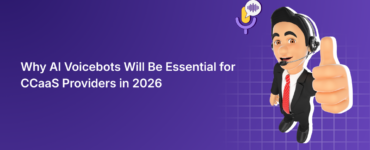In an era where customer expectations are higher than ever, businesses are constantly looking for tools and techniques to streamline operations, increase efficiency, and deliver superior customer service. One such powerful but often underused tool is call barging—a real-time intervention feature that can play a pivotal role in call center performance optimization.
Let’s explore how call barging transforms underperforming support systems into customer service powerhouses.
What is Call Barging?
Call barging is a live call monitoring capability that enables supervisors to intervene in an ongoing call between a customer and an agent. Unlike passive monitoring or whisper coaching (where only the agent hears the supervisor), call barging allows the supervisor to join the conversation audibly, providing immediate support or course correction.
It’s essentially a real-time, hands-on tool for quality control, conflict resolution, training, and performance improvement.
Why Call Barging Matters for Call Center Performance Optimization
The success of any contact center lies in its ability to handle high call volumes while maintaining quality, accuracy, and customer satisfaction. Call barging addresses these core performance metrics directly.
1. Real-Time Quality Assurance and Error Prevention
Supervisors can use call barging to monitor and improve service quality on the spot—a capability that traditional monitoring or post-call analysis simply can’t match.
- Immediate Damage Control: If a call is going off-script, escalating, or confusing for the agent, supervisors can jump in instantly to steer it back on track.
- Live Compliance Checks: Supervisors ensure agents follow mandatory scripts, data protection protocols, and legal compliance—all crucial to avoid costly mistakes or violations.
- Customer-Centric Corrections: With real-time feedback, issues are resolved during the call itself rather than through after-call escalations or callbacks, directly enhancing the customer experience.
In short, it reduces Average Handling Time (AHT) and improves First Call Resolution (FCR)—both vital to call center performance optimization.
2. Supercharged Agent Training and Onboarding
No training method is more effective than on-the-job learning—especially when it’s guided. Call barging enables supervisors to mentor new agents in real-time, accelerating their learning curve significantly.
- Confidence Boost for New Agents: Trainees feel supported knowing a supervisor can step in if needed, reducing fear and hesitation.
- Instant Correction and Learning: Mistakes are corrected in real-time, allowing the agent to understand and implement improvements immediately.
- Live Shadowing and Skill Transfer: Instead of passive observation, supervisors can showcase effective communication strategies by actively participating in real calls.
This results in faster ramp-up time, improved agent retention, and a consistent customer experience—essential elements of a well-optimized call center.
3. Elevated First Call Resolution (FCR) Rates
First Call Resolution is one of the most telling indicators of call center effectiveness. High FCR means that customers’ issues are resolved on the first interaction, with no need for callbacks, follow-ups, or escalations.
Call barging directly improves FCR by:
- Allowing supervisors to assist with difficult queries in real-time, reducing the likelihood of unresolved calls.
- Providing a knowledge safety net—especially during complex billing, technical, or policy-related queries.
- Helping junior agents tackle calls they might otherwise need to escalate, saving time and resources.
The ripple effect? Better FCR leads to improved Customer Satisfaction (CSAT), reduced operational costs, and shorter wait queues—all key for call center performance optimization.
4. Reduced Escalations and Improved Customer Retention
Call centers are often the front line of customer experience. A bad interaction can not only lead to escalations but also customer churn. Call barging offers a direct way to reduce such risks.
- Intervening Before It’s Too Late: If a conversation gets tense, supervisors can join, acknowledge the issue, and offer resolutions before customers ask for a manager or hang up.
- Turning Negative Into Positive: When handled well, a barged call can flip a negative customer experience into a loyalty-building interaction.
- Showing Proactive Service: Customers feel valued when a higher-up joins without being prompted—it demonstrates that the company is serious about quality service.
These benefits lead to lower churn rates, improved Net Promoter Scores (NPS), and stronger brand loyalty—hallmarks of an optimized call center.
5. Data-Driven Insights and Strategic Decision Making
Modern call barging tools often integrate with call analytics dashboards. This enables businesses to turn qualitative conversations into quantifiable performance insights.
- Identify Training Needs: Calls requiring frequent intervention highlight agent knowledge gaps or script weaknesses.
- Optimize Scripts and Processes: Supervisors can track recurring customer complaints or stumbling blocks and feed this into process improvement.
- Track Supervisor Effectiveness: Evaluate how often and how successfully supervisors intervene in real-time, ensuring leadership efficiency.
When integrated with Quality Assurance (QA) and Workforce Optimization (WFO) tools, call barging becomes a vital component of a 360-degree performance management ecosystem.
Best Practices for Leveraging Call Barging Effectively
To unlock the full potential of call barging for call center performance optimization, consider these best practices:
| Best Practice | Description |
|---|---|
| Be Transparent | Inform agents about the use of call barging to foster trust, not fear. |
| Set Clear Intervention Guidelines | Define when supervisors should intervene to avoid confusion or overlap. |
| Combine with Whisper Coaching | Use whisper mode first; reserve barging for urgent or complex issues. |
| Train Supervisors Thoroughly | Equip them with both technical and soft skills to handle live interventions gracefully. |
| Use for Positive Reinforcement | Highlight calls where agents handled situations well to motivate others. |
Final Thoughts
Call barging is more than just a monitoring tool—it is a live-action strategy for call center performance optimization. When used correctly, it empowers supervisors, uplifts agents, delights customers, and drives tangible business results.
From improving service quality and agent performance to increasing customer satisfaction and operational efficiency, call barging is a multi-dimensional lever that every modern contact center should use strategically.





[…] how to secure VoIP calls with SIP encryption is essential for maintaining privacy, ensuring compliance, and building […]